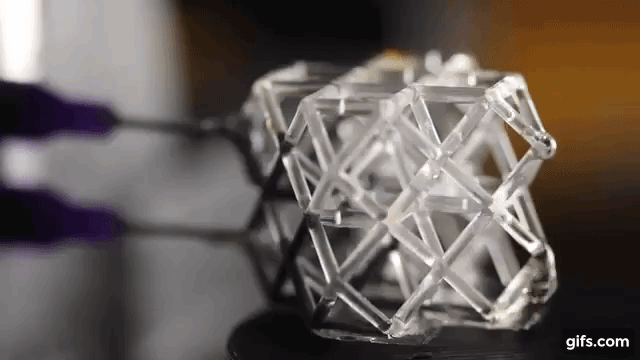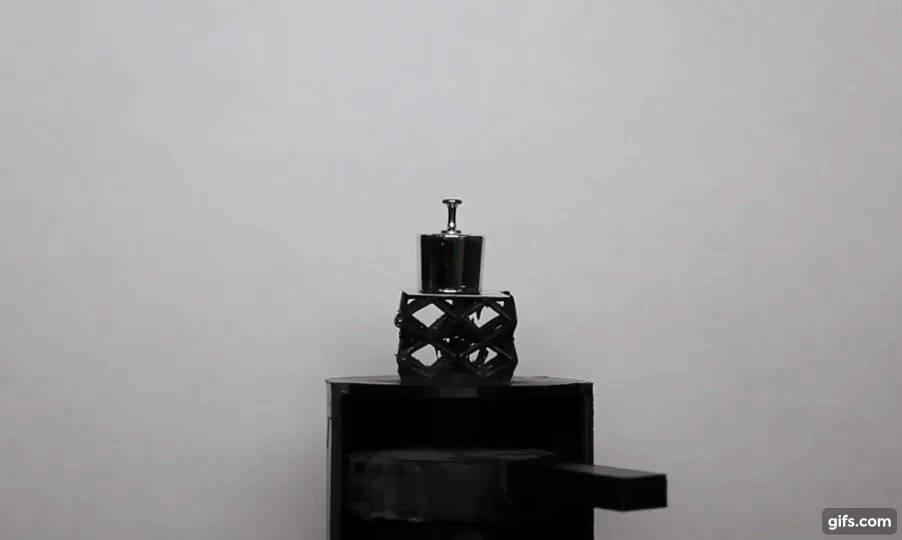Combining 3D printing with a magnetic ink injection, researchers at Lawrence Livermore National Laboratory (LLNL) have created a new class of metamaterial – engineered with behaviors outside their nature.
Like 4D printed objects, LLNL’s 3D printed lattices rely on the fourth element of time to become something “other” than their natural resting state. However, in contrast to its relatives, that often transform in response to temperatures or water, the change in LLNL’s new structures is almost instantaneous – they stiffen when a magnetic field is applied.
This unique class is the next step forward in metamaterials that can be tuned “on-the-fly” to achieve desired properties, and applied to make intuitive objects: e.g. armor that responds on impact; car seats that reduce whiplash; and next generation neck braces.

Harnessing the power of lattices
In the first stage of this development, the LLNL team performed a digital simulation of their metamaterial lattices. By doing so, the team could determine how the shape would respond to a magnetic field, and therefore optimize its structure for desired mechanical properties.
Mark Messner, former LLNL researcher and co-author of a study presenting the new metamaterial, explains, “The design space of possible lattice structures is huge, so the model and the optimization process helped us choose likely structures with favorable properties before [it was] printed, filled and tested the actual specimens, which is a lengthy process.”
After optimization, experimental lattices were 3D printed using a method of Large Area Projection Microstereolithography (LAPµSL). With microscale precision, LAPµSL enabled the team to create thin walls that could support injected fluid.
Lead author Julie Jackson Mancini explains, “In this paper we really wanted to focus on the new concept of metamaterials with tunable properties, and even though it’s a little more of a manual fabrication process,” i.e. with the injection of material, “it still highlights what can be done, and that’s what I think is really exciting.”
Materials with “on-the-fly” tunability
The ink inside the LLNL lattice is a magnetorheological fluid, containing minute magnetic particles.
Like a “dancing” iron filing experiment, when a magnetic field is applied to this lattice, the particles realign, making the structure stiff and supportive of added weight.
This newfound strength is demonstrated through a test in which a 10g weight is added to the top of the lattice. As the magnet beneath the lattice is moved away, the structure gradually gives way, and eventually drops the weight.

“What’s really important,” explains Mancini, “is it’s not just an on and off response, by adjusting the magnetic field strength applied we can get a wide range of mechanical properties,”
“The idea of on-the-fly, remote tunability opens the door to a lot of applications.”
Future development
The next steps for the LLNL metamaterial team is to develop a means of integrating the ink-injection stage of lattice fabrication, and to increase the size of objects that can be 3D printed.
Results of the lab’s most recent study, “Field responsive mechanical metamaterials” are published online in Science Advances journal. It’s co-authors are listed as Julie A. Jackson, Mark C. Messner, Nikola A. Dudukovic, William L. Smith, Logan Bekker, Bryan Moran, Alexandra M. Golobic, Andrew J. Pascall, Eric B. Duoss, Kenneth J. Loh, and Christopher M. Spadaccini.
Nominate 3D Printing Research Team of the Year and more now for the 2019 3D Printing Industry Awards.
Seeking 3D Printing Jobs in academia? Sign up here. If you’re looking for specially skilled individuals in the industry, create an employer profile.
Sign up to the 3D Printing Industry newsletter, follow us on Twitter and like us on Facebook for all the latest additive manufacturing news updates.
Featured image shows LLNL’s new class of magnetic metamaterial. Photo via Science Advances/LLNL



